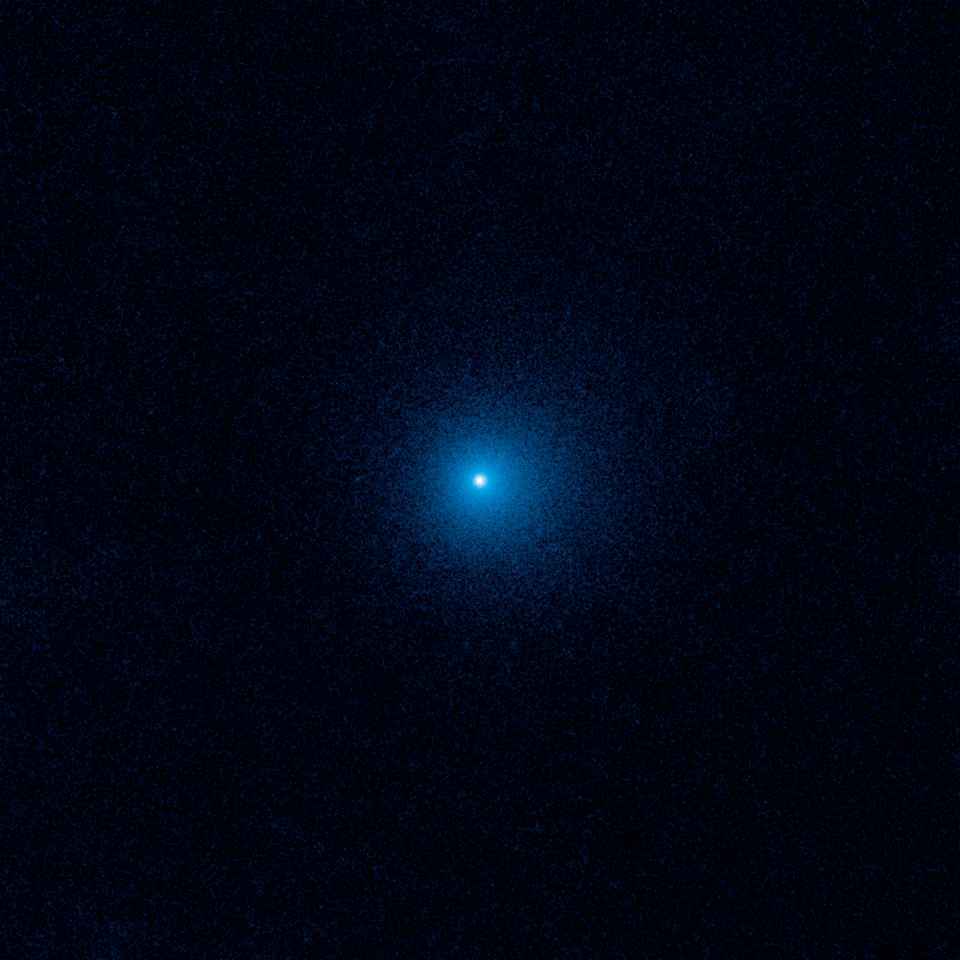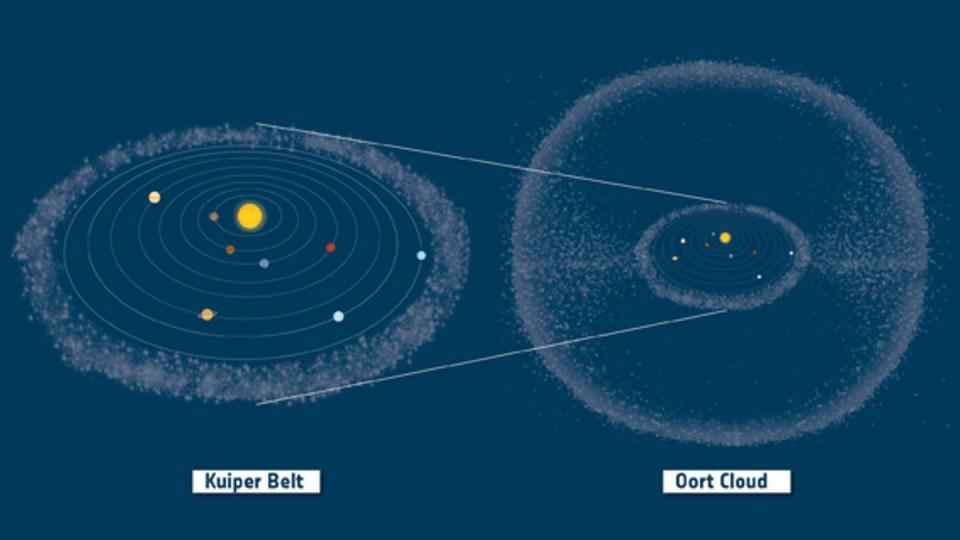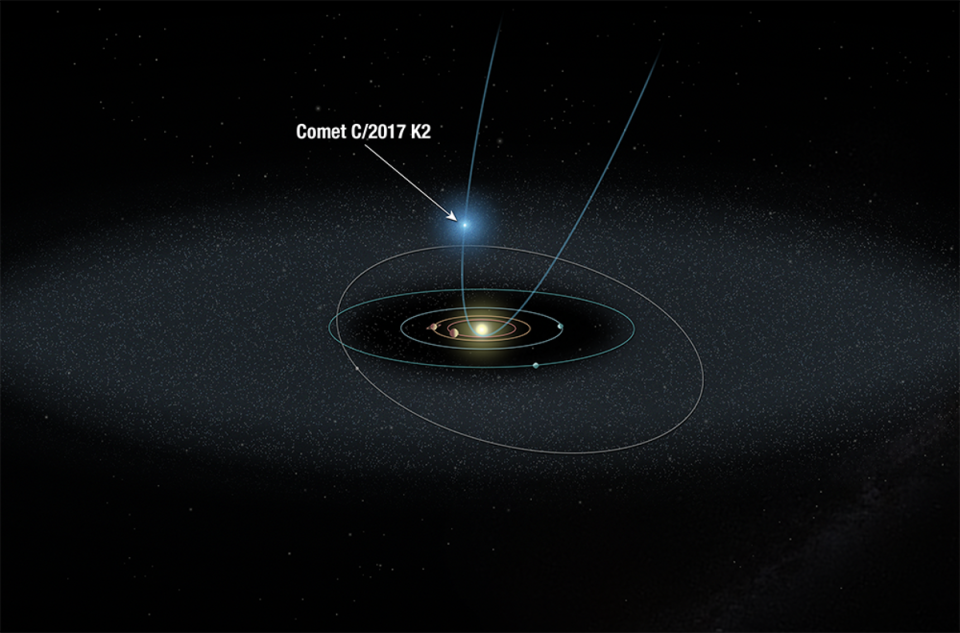Nasa’s shares image of most distant in-bound comet ever found

Nasa just shared an astrophotographer’s portrait of the most distant in-bound, active comet ever discovered.
Amateur astronomer Jose Chambo captured an image of comet C/2017 K2 (PanSTARRS) on 20 June, which is now less than 300 million kilometers from Earth and will make its closest approach to our planet on 14 July — passing with plenty of distance — and its closes approach to the Sun in December.
A huge comet with an 18-kilometer diameter core, C/2017 K2 (PanSTARRS) was already producing a coma, a cloud of gas released as the Sun warmed the comet, when it was first discovered in 2017 2.4 billion kilometers away. The glowing coma should be visible in the night sky with the aid of a small telescope — despite the comet’s size, its likely to remain too faint for naked eye observations.
C/2017 K2 (PanSTARRS) has spent an estimated 3 million years traveling toward the Sun from the Oort cloud, a realm of icy planetesimals far beyond Neptune and even the icy Kuiper belt at the edge of the Solar System, stretching up to several light years from the Sun.

The Oort cloud is though to be the source of many comets following hyperbolic orbits, as C/2017 K2 (PanSTARRS) does. In a schematic from the Hubble Space Telescope website, the comet’s path can be seen to be almost perpendicular to the plane of the solar system.

The comet should remain visible to telescopes in the Northern hemisphere into September.

 money
money 